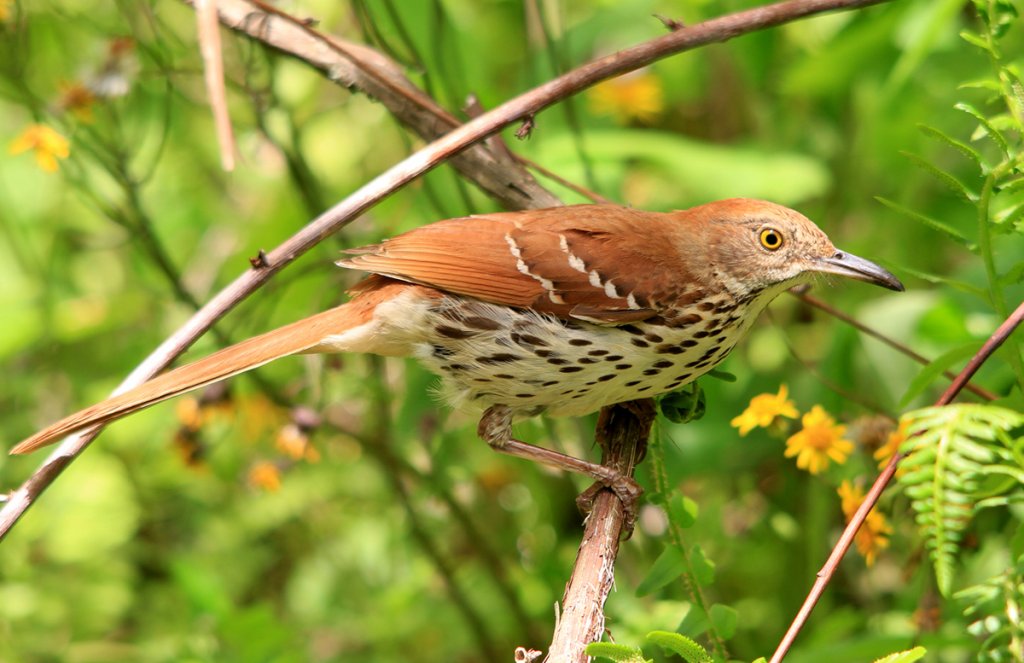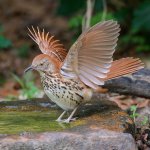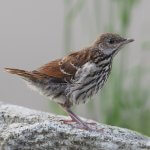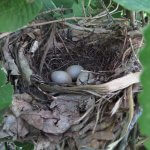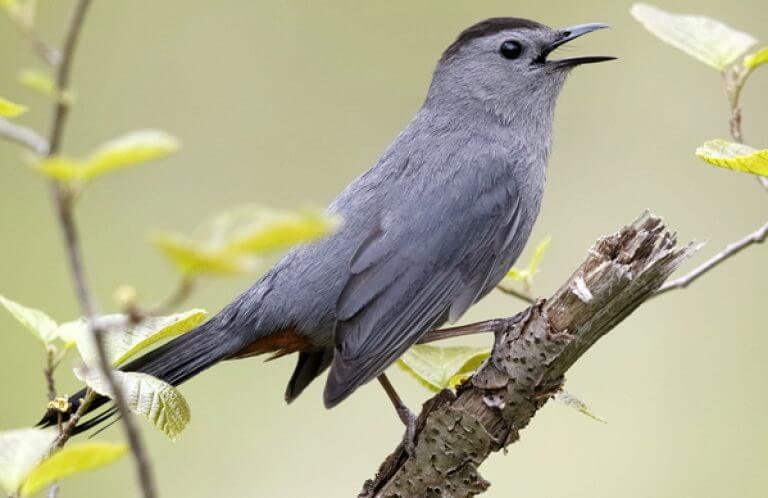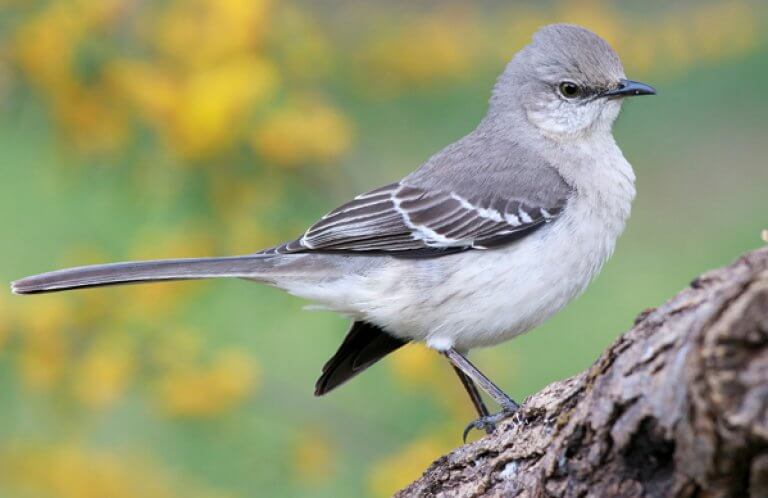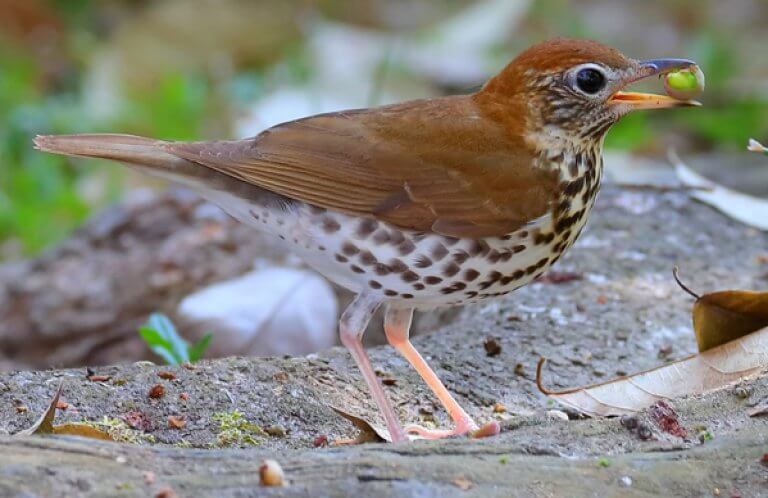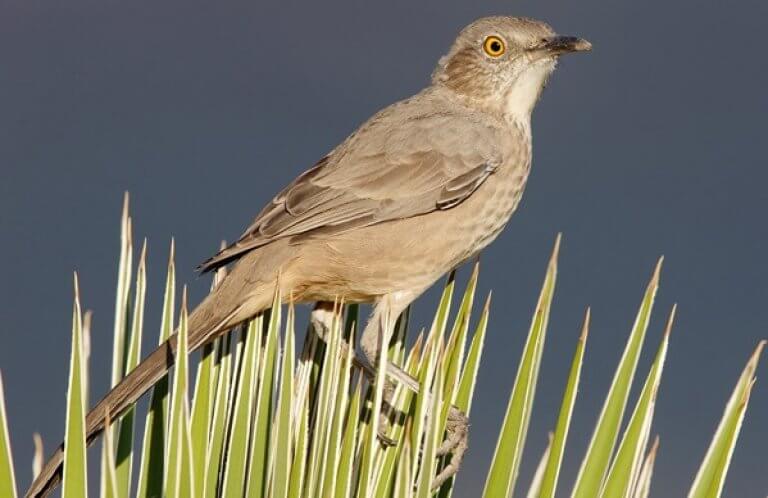About
Persistent scratching noises coming from near the ground within thick undergrowth may lead to the quick glimpse of a reddish-brown bird with streaky underside, large bill, and bright, lemon-yellow eyes. This skulking species is a Brown Thrasher, a member of the family Mimidae, or “mimic thrushes,” which also includes the Gray Catbird and Northern Mockingbird.
Although it may resemble a Wood Thrush at first glance, the thrasher has streaks, rather than spots, on its breast. It's larger than the thrush, with a longer tail, and occurs in shrubby, rather than forested, habitats.
One of the meanings of the word “thrash” is to flail wildly from side to side.
Frenetic Feeder
The Brown Thrasher's unusual name stems from its distinctive feeding behavior. It forages on the ground – usually among leaf litter and other thick ground cover –- quickly sweeping, or “thrashing” its long bill from side-to-side through leaf litter and other thick ground cover to uncover food. It shares this unique feeding strategy with western relatives such as the Bendire's Thrasher.
Songs and Sounds
Although it has a large vocal repertoire, with thousands of song types (one of the largest of all birds), the Brown Thrasher is less of a dedicated mimic than the Northern Mockingbird. Its song also differs from a mockingbird's by fewer repeated phrases (usually one or two, as opposed to the mockingbird's three or more) and it has more mellow, musical quality.
American naturalist and philosopher Henry David Thoreau described the Brown Thrasher's song as sounding like: “Drop it, drop it — cover it up, cover it up — pull it up, pull it up, pull it up.”
Listen here:
Breeding and Feeding
Early spring is the easiest time of year to spot a Brown Thrasher. Newly-arriving males are especially conspicuous as they sing from high, open perches while establishing new territories. Once pairs form and begin to nest, this bird becomes much more elusive, staying hidden under thick cover.
The Brown Thrasher is monogamous during its breeding season, and mated pairs fiercely defend their nest by swooping on animal, and even human, intruders. Both adults work on building their bulky, cup-shaped nest of twigs and leaves, lining the structure with softer rootlets. The nest may be situated in thick shrubbery, vines, in a small tree, or on the ground. Nests are occasionally re-used from year to year.

Both parents incubate the clutch of 3-5 eggs, (although the female does the majority) and feed the nestlings. Young Brown Thrashers fledge within a week and a half to two weeks. Leaving the nest quickly be an adaptation to frequent nest predation, a common hazard for the Brown Thrasher and other ground and shrub-nesting species such as the Common Yellowthroat, Song Sparrow, and Wilson's Warbler. The Brown Thrasher may raise multiple broods per season.
The Brown Thrasher is a common host of Brown-headed Cowbird, which lays its eggs in other birds' nests. However, the thrasher often seems to recognize the foreign eggs, and will eject them from their nest.
Thrashing for Tidbits
The Brown Thrasher, like the Sage Thrasher and other near relatives, is omnivorous, feeding heavily on insects during the breeding season and fruit, berries and seeds at other times of the year. It has been observed cracking open acorns by pounding them with its bill. This species will occasionally prey upon small frogs, lizards, snakes, crayfish, and crabs.
Region and Range

The Brown Thrasher can be found from southcentral and southeastern Canada to the southcentral and southeastern United States. It's the only member of its genus, Toxostoma, that occurs east of the Rocky Mountains and central Texas.
Like the Eastern Bluebird, this thrasher is a “partial” migrant, with birds that breed in the northern part of its range moving relatively short distances southward to their wintering ranges. It's a year-round resident in southern portion of its range. Like most songbirds, when they migrate, they do so at night.
This species' preferred habitats include dense, shrubby hedgerows, thickets, young forests, and forest edges. It sometimes nests in agricultural areas such as orchards, and close to human habitats in suburbs.
Conservation

Help support ABC's conservation mission!
The Brown Thrasher faces a number of human-caused threats, including predation by outdoor cats; collisions with cars, towers, and buildings; and poisoning by pesticides. Partners in Flight has documented an almost 40-percent drop in Brown Thrasher populations in the U.S. and Canada between 1970 and 2016.
ABC has a number of programs in place to reduce threats to the Brown Thrasher and other birds. Learn how you can reduce pesticide use, find out more about our Cats Indoors program, which encourages pet owners to keep cats and birds safe, and learn about mitigating collisions at towers and with glass.
Get Involved
Policies enacted by the U.S. Congress and federal agencies, such as the U.S. Fish and Wildlife Service, have a huge impact on U.S. birds. You can help shape these rules for the better by telling lawmakers to prioritize birds, bird habitat, and bird-friendly measures. To get started, visit ABC's Action Center.
Living a bird-friendly life can have an immediate impact on the birds around you. Doing so can be as easy as adding native plants to your garden, avoiding pesticides, and keeping cats indoors. To learn more, visit our Bird-Friendly Life page.
American Bird Conservancy and our Migratory Bird Joint Venture partners have improved conservation management on more than 8.5 million acres of U.S. bird habitat — an area larger than the state of Maryland — over the last ten years. This is a monumental undertaking, requiring the support of many, and you can help by making a gift today.





































